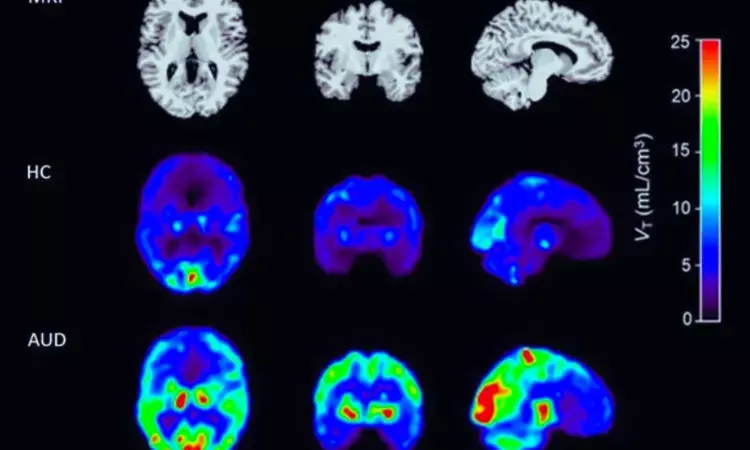- Home
- Medical news & Guidelines
- Anesthesiology
- Cardiology and CTVS
- Critical Care
- Dentistry
- Dermatology
- Diabetes and Endocrinology
- ENT
- Gastroenterology
- Medicine
- Nephrology
- Neurology
- Obstretics-Gynaecology
- Oncology
- Ophthalmology
- Orthopaedics
- Pediatrics-Neonatology
- Psychiatry
- Pulmonology
- Radiology
- Surgery
- Urology
- Laboratory Medicine
- Diet
- Nursing
- Paramedical
- Physiotherapy
- Health news
- Fact Check
- Bone Health Fact Check
- Brain Health Fact Check
- Cancer Related Fact Check
- Child Care Fact Check
- Dental and oral health fact check
- Diabetes and metabolic health fact check
- Diet and Nutrition Fact Check
- Eye and ENT Care Fact Check
- Fitness fact check
- Gut health fact check
- Heart health fact check
- Kidney health fact check
- Medical education fact check
- Men's health fact check
- Respiratory fact check
- Skin and hair care fact check
- Vaccine and Immunization fact check
- Women's health fact check
- AYUSH
- State News
- Andaman and Nicobar Islands
- Andhra Pradesh
- Arunachal Pradesh
- Assam
- Bihar
- Chandigarh
- Chattisgarh
- Dadra and Nagar Haveli
- Daman and Diu
- Delhi
- Goa
- Gujarat
- Haryana
- Himachal Pradesh
- Jammu & Kashmir
- Jharkhand
- Karnataka
- Kerala
- Ladakh
- Lakshadweep
- Madhya Pradesh
- Maharashtra
- Manipur
- Meghalaya
- Mizoram
- Nagaland
- Odisha
- Puducherry
- Punjab
- Rajasthan
- Sikkim
- Tamil Nadu
- Telangana
- Tripura
- Uttar Pradesh
- Uttrakhand
- West Bengal
- Medical Education
- Industry
Routine imaging in postoperative follow-up of patients with pancreatic ductal adenocarcinoma may help improve overalls survival: JAMA

Recent research has shown that, in comparison to symptom-based follow-up, routine imaging in follow-up after pancreatic resection for pancreatic ductal adenocarcinoma (PDAC) is associated with survival and a higher rate of treatment targeted towards recurrence. The study was conducted by Paul C. and colleagues published in JAMA Surgery journal.
PDAC is considered one of the most aggressive forms of malignancy with high recurrence following surgical resection. The overall objective of this research was to examine how these follow-up interventions impacted overall survival and chances of access to recurrence-specific treatments in patients with recurrent PDAC.
This was a prospective, cross-sectional trial conducted in 13 countries and 33 E-AHPBA centers across the years 2020 to 2021, recruiting patients with PDAC. A total of 333 participants, with a mean age of 65 years (SD, 11 years), and 184 male patients (55%), had follow-up after pancreatic resection assessed. Two approaches to the strategy of follow-up were compared: symptomatic follow-up without routine imaging and routine imaging follow-up. The overall survival was analyzed through Kaplan-Meier estimates. Logistic and Cox proportional hazard models were used to control the confounding factors.
Key Findings
• Of 333 patients with PDAC recurrence, routine imaging follow-up was done in 71% (235 patients), and the follow-up was based on symptoms in 29% of the patients (98 patients).
• Median overall survival was significantly longer for the routine imaging group, at 28 months (95% CI, 24-30 months), versus 23 months (95% CI, 19-29 months) in the symptomatic follow-up group (P = 0.01).
• Routine imaging follow-up was associated with a higher likelihood of receiving recurrence-focused treatment (adjusted odds ratio, 2.57; 95% CI, 1.22-5.41; P =0.01).
• In contrast, overall survival was prolonged among patients who had routine imaging at regular intervals, with an adjusted hazard ratio of 0.75 (95% CI, 0.56-0.99; P = 0.04).
Routine imaging post-resection of PDAC was independently associated with greater recurrence-focused treatment and longer survival, and an overall survival rate of 28 months in patients monitored by routine imaging versus symptomatic follow-up at 23 months. Specific imaging protocols must be further explored as well as their cost-effectiveness, and then uniform, evidence-based guidelines for follow-up care have to be developed.
Reference:
Dr Riya Dave has completed dentistry from Gujarat University in 2022. She is a dentist and accomplished medical and scientific writer known for her commitment to bridging the gap between clinical expertise and accessible healthcare information. She has been actively involved in writing blogs related to health and wellness.
Dr Kamal Kant Kohli-MBBS, DTCD- a chest specialist with more than 30 years of practice and a flair for writing clinical articles, Dr Kamal Kant Kohli joined Medical Dialogues as a Chief Editor of Medical News. Besides writing articles, as an editor, he proofreads and verifies all the medical content published on Medical Dialogues including those coming from journals, studies,medical conferences,guidelines etc. Email: drkohli@medicaldialogues.in. Contact no. 011-43720751


